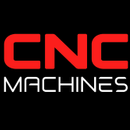6 Ways to Take Full Advantage of AI in Manufacturing

6 Ways to Take Full Advantage of AI in Manufacturing
Artificial Intelligence (AI) is rapidly transforming the manufacturing industry, offering opportunities to enhance safety, productivity, and efficiency. From integrating cobots (collaborative robots) with human workers to leveraging big data for supply chain optimization, AI is reshaping the way manufacturers operate. Here are six powerful ways to take full advantage of AI in manufacturing:
1. Increase Safety and Productivity with Cobots
Cobots, or collaborative robots, are designed to work alongside human workers, enhancing both safety and productivity. AI plays a crucial role in ensuring that cobots operate efficiently and safely in manufacturing environments.
- AI-Powered Safety Systems: AI algorithms can monitor the movements of both cobots and humans in real-time, detecting potential hazards and adjusting the cobots' actions to prevent accidents. This creates a safer working environment where robots and humans can collaborate seamlessly.
- Adaptive Learning: AI enables cobots to learn from their interactions with human workers, improving their performance over time. This adaptability ensures that cobots can handle a variety of tasks, reducing the need for manual intervention and increasing overall productivity.
2. Connect Supply Chains and Big Data from Planning to Production
AI-driven technologies are revolutionizing supply chain management by providing real-time insights and connecting every stage of the supply chain, from planning to production.
- Big Data Integration: AI can analyze vast amounts of data from various sources, including suppliers, logistics, and production lines. This integration allows manufacturers to optimize inventory levels, forecast demand more accurately, and reduce lead times.
- End-to-End Visibility: By connecting the entire supply chain, AI enables manufacturers to gain complete visibility into their operations. This transparency helps in identifying inefficiencies, managing risks, and making informed decisions that enhance overall efficiency.
3. Implement Predictive Maintenance to Reduce Downtime
Unplanned downtime can be costly for manufacturers. AI-driven predictive maintenance offers a proactive approach to maintaining equipment and reducing the likelihood of unexpected failures.
- Real-Time Monitoring: AI systems continuously monitor the condition of machinery and equipment, analyzing data such as vibration, temperature, and pressure. This real-time monitoring allows for the early detection of potential issues.
- Proactive Predictions: AI algorithms can predict when a machine is likely to fail based on historical data and current conditions. This proactive approach enables maintenance teams to address issues before they lead to costly downtime, ensuring that production continues smoothly.
4. Improve Quality Checks on Basic to Advanced Levels
AI has the potential to revolutionize quality control processes in manufacturing, making it possible to perform quality checks at both basic and advanced levels, regardless of production volume.
- Automated Inspection: AI-powered vision systems can inspect products for defects at high speed, ensuring that only products meeting quality standards move forward in the production process. This automation reduces the risk of human error and ensures consistent quality.
- Advanced Analytics: AI can analyze data from quality checks to identify patterns and trends that may indicate underlying issues in the production process. This insight allows manufacturers to make data-driven adjustments that improve overall product quality.
5. Further Customization and Process Improvement
AI enables manufacturers to offer greater customization in their products and continuously improve processes to meet changing market demands.
- Personalized Manufacturing: AI allows for the customization of products on a mass scale by analyzing customer preferences and production capabilities. This capability enables manufacturers to produce tailored products without compromising efficiency.
- Process Optimization: AI-driven analytics can identify bottlenecks and inefficiencies in the production process. By continuously refining processes based on real-time data, manufacturers can improve throughput, reduce waste, and enhance overall productivity.
6. Real-Time Empowerment for Employees
AI empowers employees by providing them with real-time information and insights, allowing them to make better decisions and work more efficiently alongside AI-driven systems.
- Real-Time Data Access: AI systems can provide employees with up-to-the-minute data on production status, machine performance, and supply chain metrics. This real-time access allows workers to respond quickly to any issues and make informed decisions that keep production on track.
- Collaboration with AI: AI tools can assist employees in tasks such as scheduling, resource allocation, and quality control. By collaborating with AI, employees can focus on more strategic and creative aspects of their work, leading to higher job satisfaction and better outcomes.
Conclusion
AI offers a wealth of opportunities for manufacturers to enhance safety, productivity, and efficiency. By integrating AI-driven solutions such as cobots, predictive maintenance, and real-time data analytics, manufacturers can stay competitive in a rapidly evolving industry. As AI continues to advance, those who fully embrace these technologies will be better positioned to lead in the future of manufacturing.


